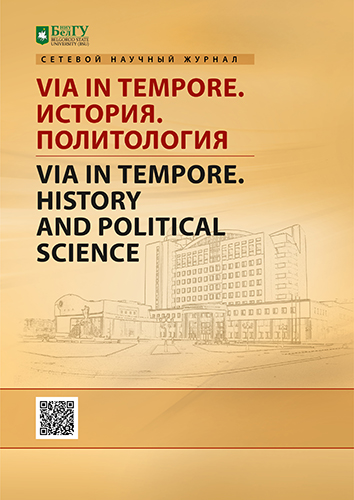COORDINATION CENTER AS AN ELEMENT OF INTERNATIONAL PROTECTION OF ENVIRONMENTAL MIGRANTS
DOI:
https://doi.org/10.18413/2687-0967-2020-47-1-178-186Keywords:
climate change, ecological migration, forced relocation, environmental migrants, refugees, sustainability, urbanization, international law, international environmental law, international organizationsAbstract
The issue of climate change carries important ethical and social elements. Modern practice shows that the concept of «environmental migrant», as well as common approaches to managing environmental migration are absent in international systems and standards. The article discusses the necessity to create a unified system of international legal protection for persons affected in extreme situations of a natural character. Victims are understood as persons who were forced to leave areas with a dangerous for life and human health state of the environment, for example, in the result of technological disasters and related climate changes. This kind of population movement is often called «environmental migration», and those affected and forced to move are called «environmental migrants». The article discusses the characteristic properties and signs of «environmental migrant». A model of a unified coordinating center for working with environmental migrants is proposed, which differs from the existing ones by a focus on forecasting environmental migration, considering the experience of leading internationally known human rights organizations and the regional characteristics of the host and affected regions. The study uses an approach from the concept of «climate justice» to be implemented in a model of unified coordination center working with environmental migrants. To sum up, these measures contribute to the development of the most acceptable and effective mechanism for the successful coordination and solution to the problems associated with environmental migration at the international level.
Downloads
References
Бекяшев Д.К. 2013. Экологическая миграция населения: Международно-правовые ас-пекты. М., Аспект-пресс, 176.
Евтушенко В.И. 2016. Экологическая миграция как составная часть системы защи-щенности человека и обеспечения экологической безопасности. Lex Russica, 6 (115): 158–169.
Маркова Е.Ю. 2018. Международно-правовая защита экологических мигрантов: реа-лии и перспективы. Актуальные проблемы Российского права, №. 7 (92): 209–217.
Прокофьев А.В. 2018. Климатическая справедливость: российский контекст. Этическая мысль, Т. 11: 140–163.
Adamo Susana B. 2010. Environmental migration and cities in the context of global envi-ronmental change. Current Opinion in Environmental Sustainability, 2.3: 161–165.
Afifi T. 2011. Economic or environmental migration? The push factors in Ni-ger. International Migration, 49: 95–124.
Black R. et al. 2011. The effect of environmental change on human migration. Global envi-ronmental change, 21: 3–11.
Castles, Stephen. 2002. Environmental change and forced migration: making sense of the debate. UNHCR: 16 p.
Goodhart M. 2016. Human rights: politics and practice. Oxford university press, 528.
Ferris E. 2015. Climate change, migration and the incredibly complicated task of influencing policy. Brookings Institution Conference on «Human Migration and the Environment: Futures, Politics, Invention» Durham University, vol. 1: 234–240.
Findlay Allan M. 2011. Migrant destinations in an era of environmental change. Global En-vironmental Change, 21: 50–58.
Fröhlich Christiane J. 2016. Climate migrants as protestors? Dispelling misconceptions about global environmental change in pre-revolutionary Syria. Contemporary levant, 1.1: 38–50.
Kniveton D. et al. 2008. Climate Change and Migration: Improving Methodologies to Esti-mate Flows. Brighton, UK. International Organization for Migration, University of Sussex, vol. 72: 57.
Lele S.M. 1991. Sustainable development: a critical review. World development, 19(6): 607–621.
Mayer B. 2016. The arbitrary project of protecting environmental migrants. Environmental migration and social inequality. Springer, Cham, 189–200.
McAdam J. 2012. Climate change, forced migration, and international law. Oxford Universi-ty Press, 340.
Nissani M. 1997. Ten cheers for interdisciplinarity: The case for interdisciplinary knowledge and research. The social science journal. vol. 34 (2): 201–216.
Obokata Reiko, Luisa Veronis, and Robert McLeman. 2014. Empirical research on interna-tional environmental migration: a systematic review. Population and environment, 36.1: 111–135.
Rigaud K.K. et al. 2018. Groundswell: Preparing for Internal Climate Migration. Washing-ton, DC: World Bank. https://doi.org/10.1596/1813-9450-5270.
Webber M., Barnett J. 2010. Accommodating migration to promote adaptation to climate change. The World Bank: 256.
Share
Published
How to Cite
Issue
Section
Copyright (c) 2020 Via in tempore. History and political science

This work is licensed under a Creative Commons Attribution 4.0 International License.


